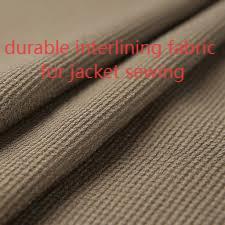In today’s apparel industry, Interlining plays a pivotal role in ensuring garments achieve the structure, support, and finish required for high-quality production. By adding interlining layers between outer fabrics and linings, manufacturers enhance the stability, comfort, and longevity of their products. This invisible component makes the difference between a limp silhouette and a crisp, professional appearance.
Reinforcement That Shapes Perfection
Supportive internal layers are essential in fashioning structured garments. Whether in dress shirts, jackets, or uniforms, these hidden reinforcements provide body and form without adding bulk. When properly selected and applied, they help garments retain their shape, resist wrinkling, and present a polished, enduring fit.
Material Types for Diverse Applications
Support materials come in various forms to serve different needs. Woven supports provide strength for structured garments, while nonwoven versions are lightweight and versatile. Knitted types offer stretch, ideal for casualwear and sportswear. Each variant allows garment engineers to fine-tune the balance between rigidity and fluidity depending on design goals and user comfort.
Application Techniques That Drive Efficiency
Technology has greatly influenced how reinforcement materials are applied. From traditional sewing methods to advanced fusing techniques, manufacturers now employ thermal adhesives to bond support layers quickly and consistently. This not only reduces production time but also ensures uniform adhesion, minimizing defects and increasing output with less labor.
Expanding Into New Industries
Support fabrics have transcended fashion. They are now integral to sectors such as home furnishings, automotive textiles, and industrial safety gear. Curtains maintain their fall, car interiors gain structure, and protective uniforms meet performance standards, all thanks to carefully engineered reinforcements. This adaptability makes internal support solutions indispensable across numerous industries.
Prioritizing Eco-Conscious Innovation
Sustainability is redefining material development. Today’s manufacturers prioritize eco-friendly options made from recycled fibers or biodegradable components. Water-based bonding systems are replacing chemical adhesives, and energy-efficient processing techniques are now standard. These green advancements allow producers to meet environmental regulations while delivering reliable and high-performance support layers.
The significance of internal structural layers goes far beyond simple fabric manipulation. It represents a fusion of engineering and aesthetics—quietly shaping how garments look, feel, and perform. Whether tailoring suits or assembling technical textiles, the integration of carefully chosen support systems remains a defining feature of quality craftsmanship.To explore additional applications, materials, and bonding methods, visit: https://www.interlining-factory.com/news/what-is-interlining-types-applications-and-more.html

